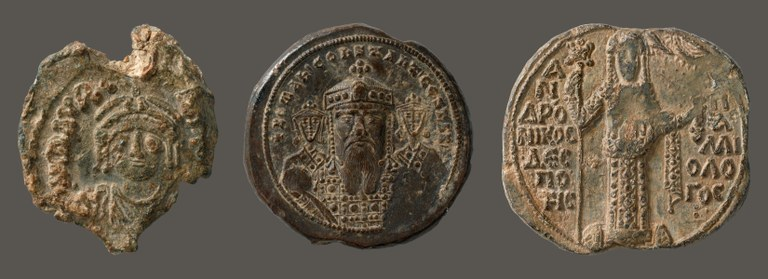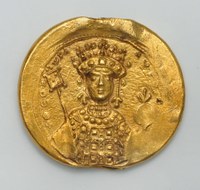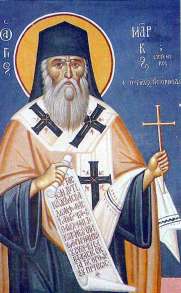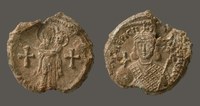Правители Бога на земле: Тысяча лет императорским печатям
В системе он-лайн выставка Византийских печатей из коллекции Думбартон Оак

God’s Regents on Earth: A Thousand Years of Imperial Seals
For over a thousand years the Byzantine Emperor ruled over the empire as God’s regent on earth. His was the ultimate authority. The emperor was the granter of titles and offices, distributer of largesse, master of the Church, commander of the army, head of the bureaucracy, and supreme judge. The decisions of the individual who sat on the throne had repercussions throughout the Byzantine world and far beyond. Decrees, letters, judgments, and commands left Constantinople every day signed by the emperor in red ink and secured with the imperial seal. These seals not only protected and authenticated imperial documents, they also served as imperial propaganda.
 Dumbarton Oaks is proud to announce the online exhibit, God’s Regents on Earth: A Thousand Years of Byzantine Imperial Seals, curated by Jonathan Shea, Post-Doctoral Associate in Byzantine Sigillography and Numismatics with assistance from Seals Intern, Lain Wilson. Displaying seals from the Dumbarton Oaks collection, the exhibit offers high resolution images, presents comparative views of the obverse and reverse, and enables the viewer to juxtapose distinct seals. Each seal is accompanied by a brief outline of the life of the ruler who issued it, and an assessment of what the object reveals about that ruler’s character, beliefs, and policies.
Dumbarton Oaks is proud to announce the online exhibit, God’s Regents on Earth: A Thousand Years of Byzantine Imperial Seals, curated by Jonathan Shea, Post-Doctoral Associate in Byzantine Sigillography and Numismatics with assistance from Seals Intern, Lain Wilson. Displaying seals from the Dumbarton Oaks collection, the exhibit offers high resolution images, presents comparative views of the obverse and reverse, and enables the viewer to juxtapose distinct seals. Each seal is accompanied by a brief outline of the life of the ruler who issued it, and an assessment of what the object reveals about that ruler’s character, beliefs, and policies.
For a further exploration of the collection of seals at Dumbarton Oaks, please visit the Byzantine Seals Online Catalog. With a collection numbering over 17,000, Dumbarton Oaks is home to the world’s largest collection of Byzantine Seals.
Thanks are due to Eric McGeer, Kathy Sparkes, Lisa Wainwright, Noah Mlotek, and Prathmesh Mengane for their help in preparing the exhibit. All photographs were taken by Joe Mills who is tirelessly photographing all 17,000 seals in the Dumbarton Oaks Collection.
http://www.doaks.org/news/news-archives/all-news-items-2012/god2019s-regents-on-earth-a-thousand-years-of-imperial-seals
The Imperial Image
Изображения императоров
-

- Sixth-century emperors: Justinian I, issued 527–65 (BZS.1958.106.563), Justin II, issued ca. 566 (BZS.1951.31.5.1618), and Maurice, issued 582–602 (BZS.1958.106.520)
The emperors of the sixth century depicted themselves in a rather generic way. Between one emperor and the next, from Justin I (518–527) to Maurice (582–602), almost nothing changed in the way the emperor's face was shown. Justin I, Justinian, and Justin II are shown nimbate, while Tiberios II and Maurice are not. For a brief period, perhaps one year, Justin II was depicted with a short beard. Beyond that, the face of each ruler closely resembled that of his predecessors. The inscriptions, however, do change, each being updated to fit the new emperor. Thus while it was important to demonstrate in words that Justin II had succeeded Justinian I, visually the priority was to portray a never ending procession of imperial power; continuity, not individuality, was key.
-

- Seventh- and eighth-century emperors: Phokas, issued 603–7 (BZS.1951.31.5.7), Herakleios and Herakleios Constantine, issued ca. 616–ca. 625 (BZS.1958.106.528), Constans II, issued 641–46 (BZS.1947.2.354), Constans II and Constantine VI, issued 654–59 (BZS.1955.1.4263), Justinian II, issued 687–95 (BZS.1955.1.4265), and Philippikos, issued 711–13 (BZS.1958.106.597)
The fashion for stylized representations of the emperor changed when Phokas murdered Maurice in 602. From then until the beginning of the eighth century the emperors took care to place not only their names, but also their likenesses on seals and coins. Phokas (602–610) himself is instantly recognizable due to his pointed beard. His successor, Herakleios (610–641), took Phokas's decision to use a portrait of the emperor two steps further, by adding portraits of his sons and by depicting himself aging. Thus seals from early in his reign show a young man with a tidy beard alongside his infant son, and seals from two decades later show Herakleios as an old man with a large bushy beard and mustache, and with a son who matches him in height. This depiction of aging was adopted by all the members of Herakleios's family. None of the men who ruled after Justinian II, either between his two reigns or after his final overthrow and execution, survived for long enough to need to show themselves aging on their seals or coins. Without exception, however, they all continued the tradition of Phokas in depicting actual likenesses of themselves, rather than stylized representations of imperial power. The last of these to be represented in the Dumbarton Oaks Collection is Philippikos (711–713), who is shown with a curly beard, wearing his consular costume.
-

- Aniconic seals of Leo III and Constantine V (BZS.1958.106.588), Constantine V (BZS.1958.106.581), Constantine V and Leo IV (BZS.1958.106.589), and Leo IV and Constantine VI (BZS.1955.1.4277)
-

- Stylized representations of Constantine VI, issued 790–92 (BZS.1958.106.561), Eirene, issued 797–802 (BZS.1955.1.4274), and Nikephoros I, issued 802–3? (BZS.1955.1.4285)
-

- Stylized representations of Basil I, issued ca. 868 (BZS.1958.106.500), and Leo VI and Alexander, issued 886–912 (BZS.1955.1.4294)
-

- The transition from stylized representations to portraits is apparent on the seals of Romanos I Lekapenos, issued 922/24–31 (BZS.1951.31.5.21) and Romanos I Lekapenos, issued 931–44 (BZS.1951.31.5.51)
When depicted alone all of Romanos's successors until the mid-eleventh century continued this use of portraiture. The trend is particularly noticeable in the very fine seals of Constantine VII. Although the portraits of the emperors from John I Tzimiskes to Isaakios I Komnenos are not are as well executed as those of Romanos I and Constantine VII there does seem to have been a conscious effort to distinguish the features of one emperor from another. On seals representing joint rulers, Constantine VII and Romanos II, and Basil II and Constantine VII, traditional stylized representations of the emperors were used instead of portraits.
-

- Constantine VII, issued 945 (BZS.1958.106.575), John I Tzimiskes, issued 969–76 (BZS.1955.1.4316), Basil II, issued 976–1025 (BZS.1958.106.584), Romanos III Argyros, issued 1028–34 (BZS.1951.31.5.1664), Michael IV, issued 1034–41 (BZS.1958.106.525), Constantine IX Monomachos, issued 1042–55 (BZS.1958.106.623), Theodora, issued 1055–56 (BZS.1961.20), Michael VI, issued 1056–57 (BZS.1955.1.4318), and Isaakios I Komnenos, issued 1057–59 (BZS.1955.1.4319)





